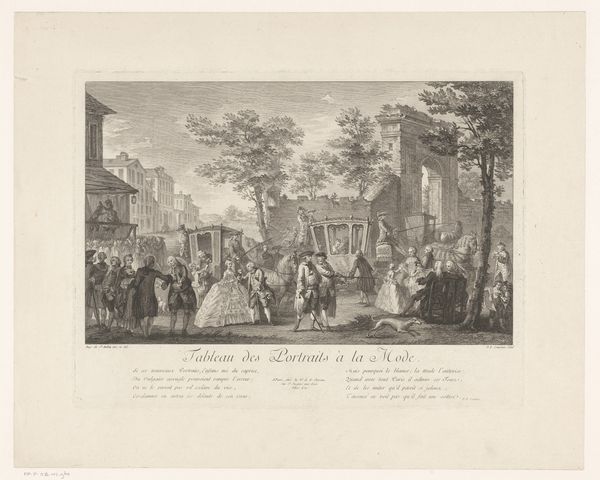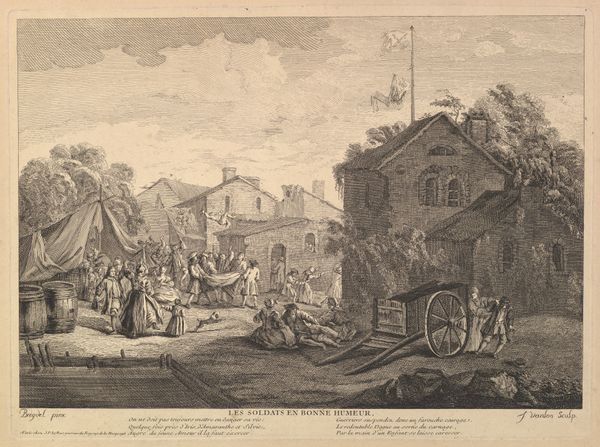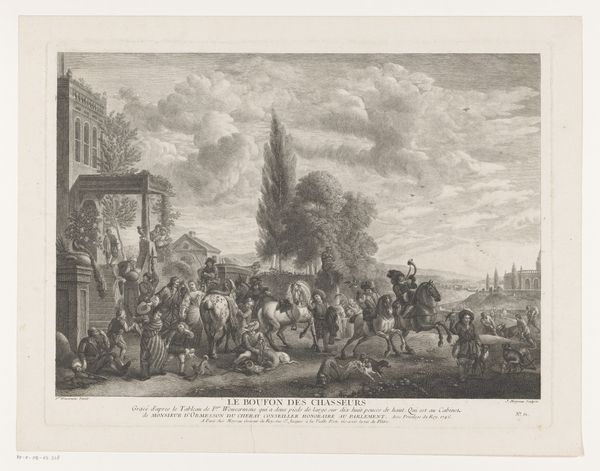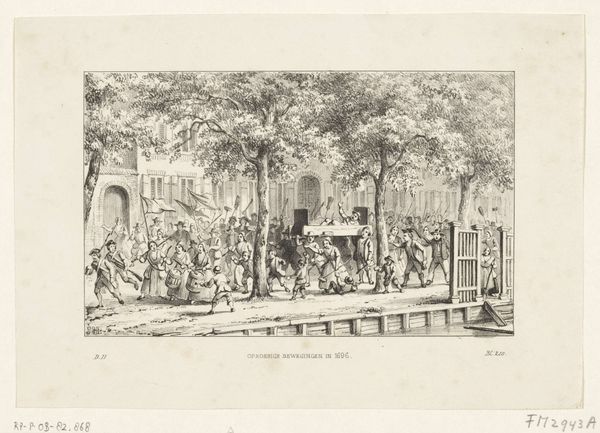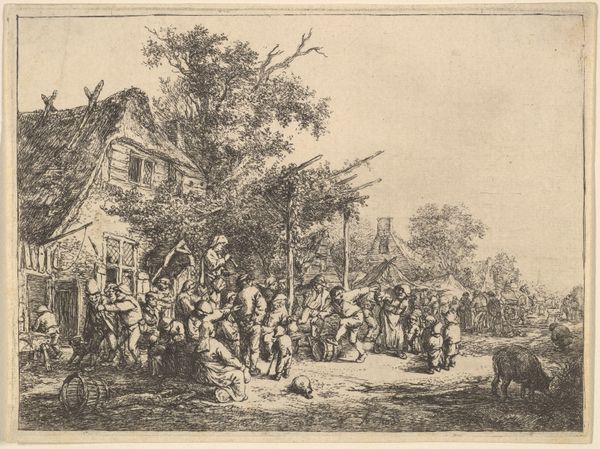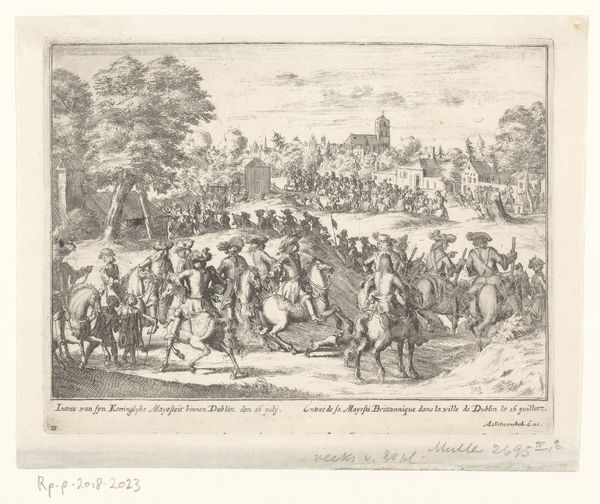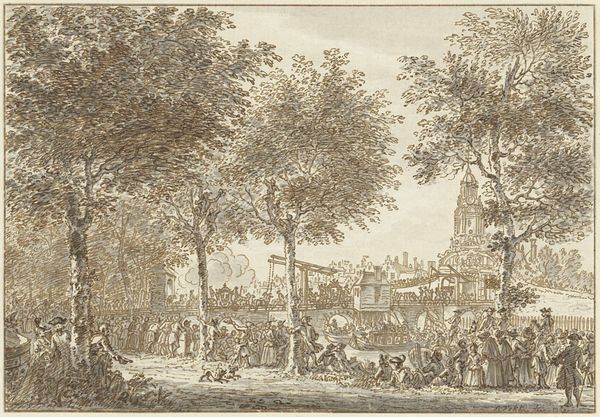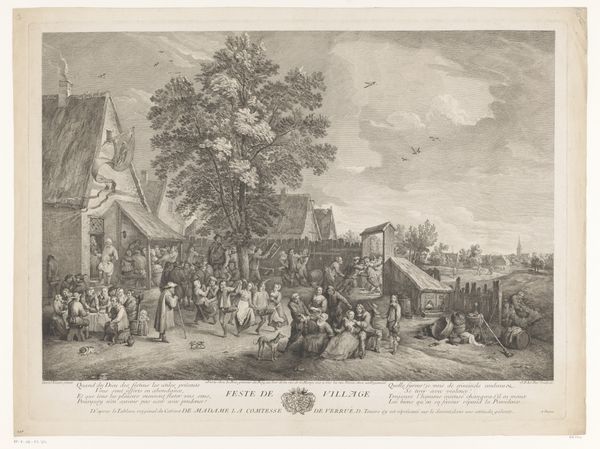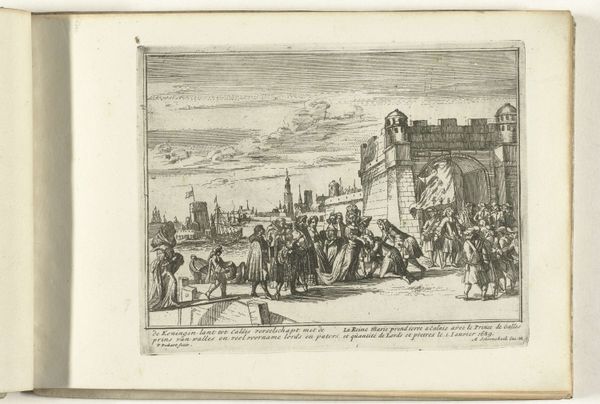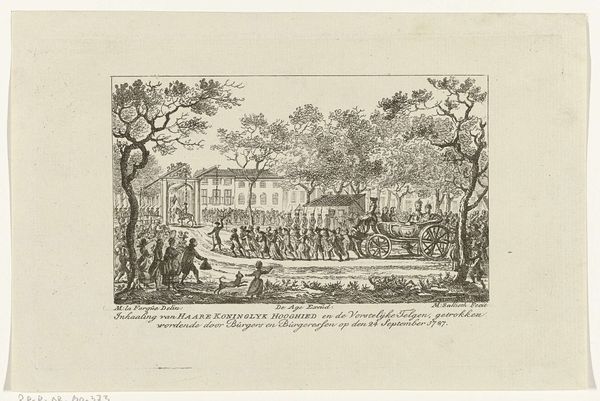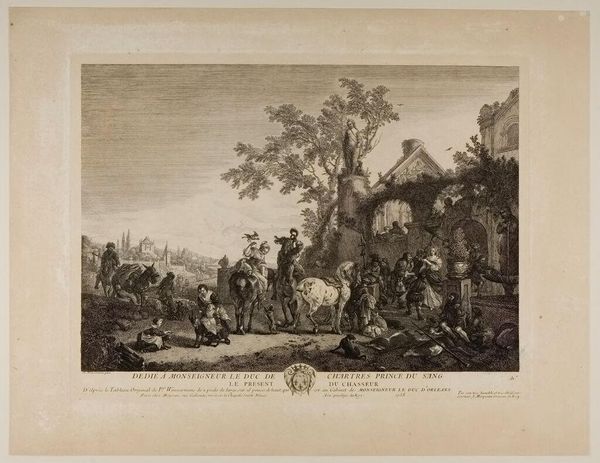
Tableau des portraits a la Mode (Plate of Fashion Portraits) 1760 - 1761
0:00
0:00
drawing, print, engraving
#
drawing
#
pen drawing
# print
#
dog
#
landscape
#
cityscape
#
genre-painting
#
engraving
#
rococo
Dimensions: Sheet: 11 7/8 × 16 13/16 in. (30.1 × 42.7 cm) Plate: 11 7/16 × 15 7/8 in. (29.1 × 40.3 cm)
Copyright: Public Domain
Editor: This is "Tableau des portraits a la Mode" or "Plate of Fashion Portraits", a print made by Pierre François Courtois in 1760 or 1761. It's incredibly detailed. It feels like a snapshot of a very specific moment in time, a bustling cityscape filled with carriages and elegantly dressed figures. How do you interpret this work? Curator: It's a fascinating piece, isn't it? While seemingly just a genre scene, it speaks volumes about the social hierarchies of 18th-century France. Consider the title itself: “Tableau des portraits a la Mode”. What does "fashionable portraits" suggest to you? Editor: That these are the people who set trends? They are concerned with how they appear. Curator: Precisely! Courtois presents us with a study of class and performance. The meticulous detail emphasizes the elaborate dress and leisure activities of the aristocracy, while subtly hinting at the labor and social inequalities that sustain their lifestyle. Notice the dog; who are pets for, and why? Editor: Good point, the elite have the leisure to have pets while others were struggling. So, you're saying the artwork serves as a kind of social commentary? Curator: Absolutely. Look at the crumbling architecture in the background juxtaposed with the pristine carriages. Is Courtois perhaps implying the fragility of the aristocracy? How long until a new order supplants it? Consider this image not just as a reflection of its time, but as a silent harbinger of the revolutionary ideas brewing beneath the surface. What do you think the artist is advocating? Editor: Wow, I never thought of it that way. It’s much more than just a pretty picture; it's a loaded commentary on power and impending social change. Curator: Exactly. By exploring its historical and social context, we uncover a richer, more politically charged understanding of the work. Hopefully, that deeper engagement encourages others to think critically about the world around them. Editor: It definitely does. It really makes me want to dive into more Rococo-era art.
Comments
No comments
Be the first to comment and join the conversation on the ultimate creative platform.

